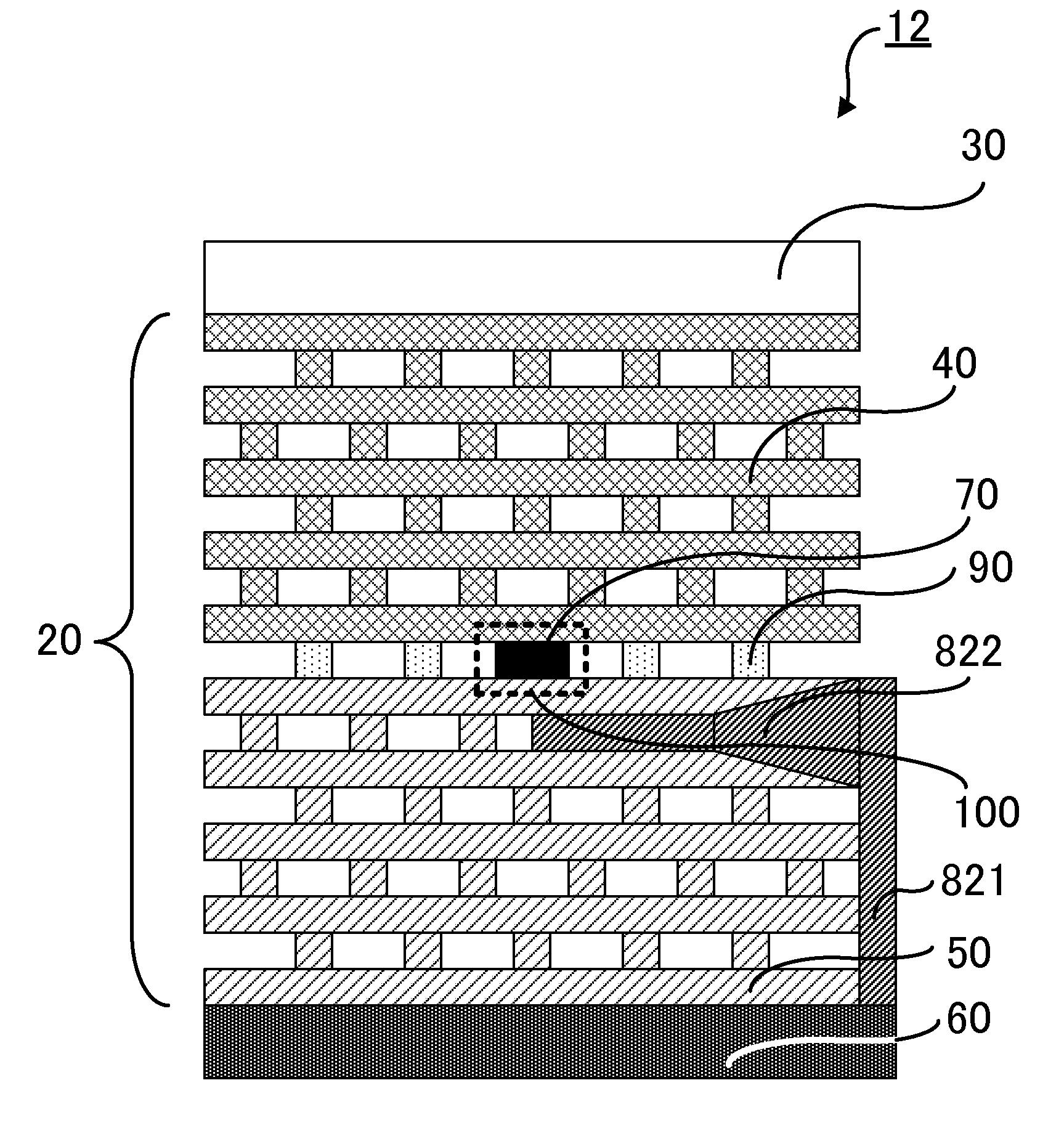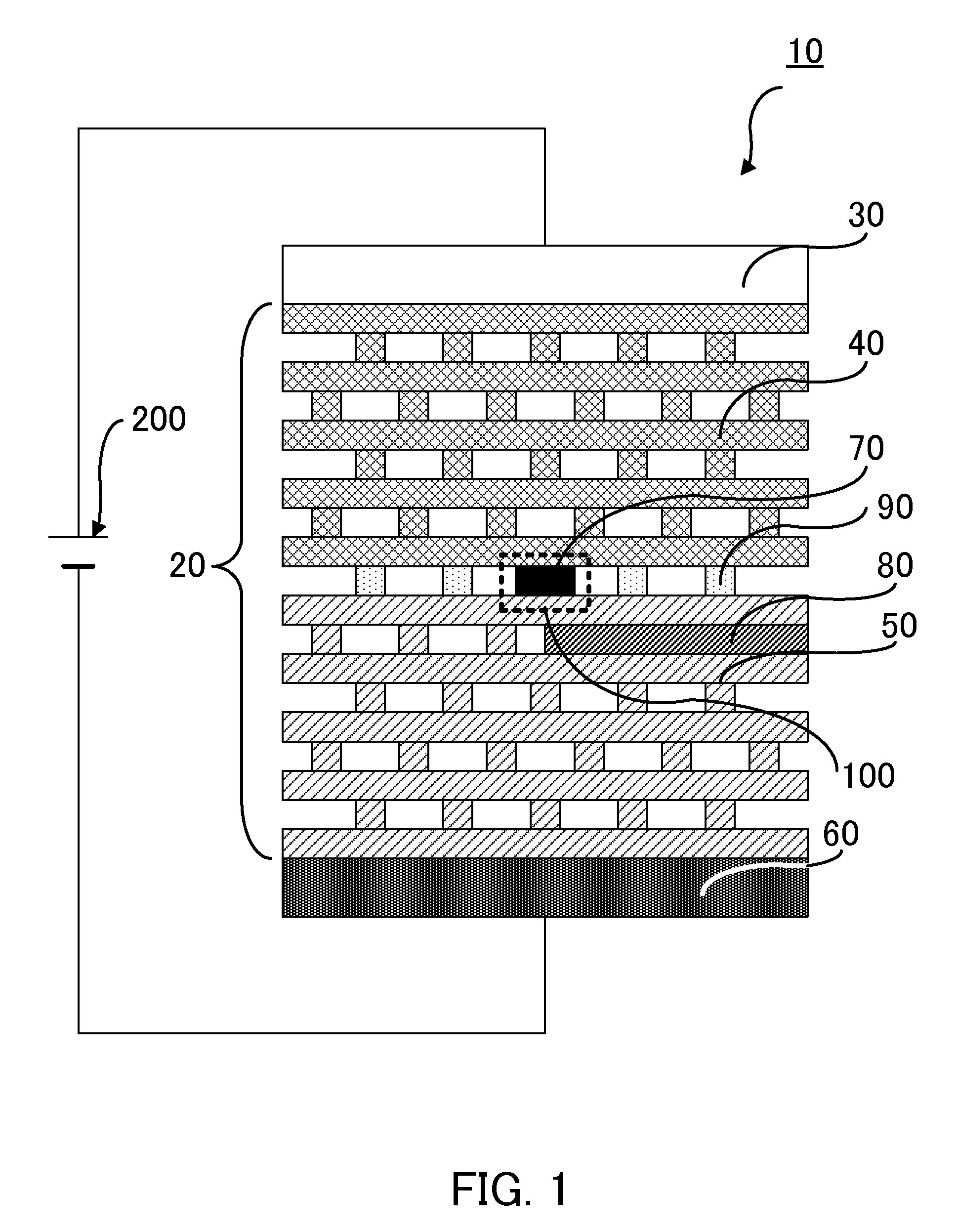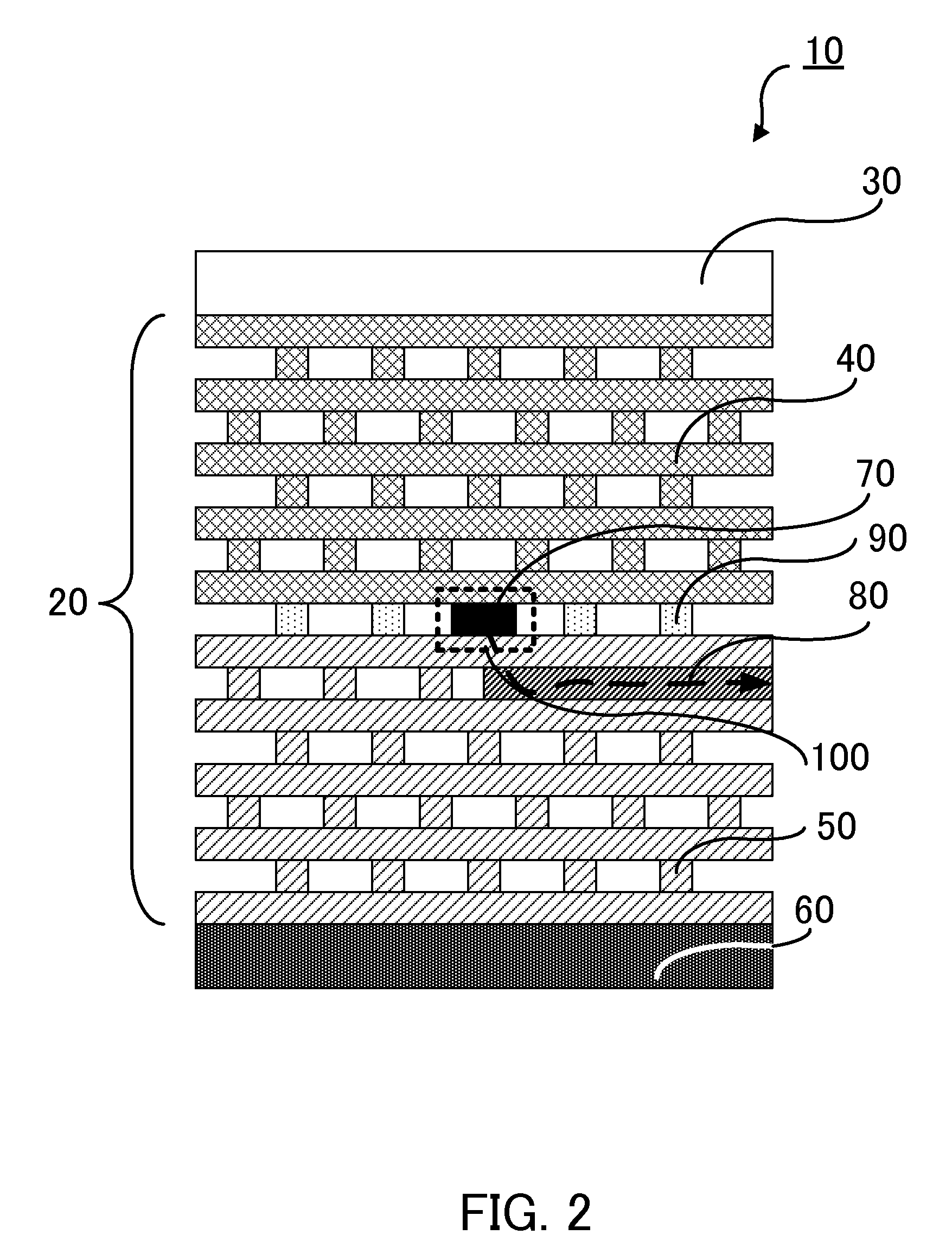Light emitting device using three-dimensional photonic crystal
a three-dimensional photonic crystal and light-emitting device technology, applied in the direction of optical elements, semiconductor lasers, instruments, etc., can solve the problems of carrier overflow, loss that reduces an internal efficiency, and all the injected carriers do not necessarily contribute to a desired luminescence, etc., to achieve high efficiency and stability
- Summary
- Abstract
- Description
- Claims
- Application Information
AI Technical Summary
Benefits of technology
Problems solved by technology
Method used
Image
Examples
embodiment 1
[0021]FIG. 1 shows a cross section of a light emitting device that is embodiment 1 of the present invention. The light emitting device 10 includes a three-dimensional photonic crystal 20, a P-type electrode 30, and an N-type electrode 60. The three-dimensional photonic crystal 20 includes a P clad part 40 formed by a P-type semiconductor, an N clad part 50 formed of a first N-type semiconductor, and an active part 70 and insulated part 90 provided between the P clad part 40 and the N clad part 50. Furthermore, a resonator 100 and a waveguide 80 are formed in the three-dimensional photonic crystal 20.
[0022]The resonator 100 is provided as a point defect part (a first defect part) in the three-dimensional photonic crystal 20. The active part 70 which is formed by an active medium and performs a light emitting action by the injection of the carriers (hole and electron) is provided in the resonator 100. Light is emitted by the recombination of the hole and the electron injected into the...
embodiment 2
[0044]FIG. 4 shows a cross section of a light emitting device that is embodiment 2 of the present invention. A light emitting device 11 of the present embodiment is different from the light emitting device 10 of embodiment 1 in the following points. With regard to the part that has the same function as that of the light emitting device 10 of embodiment 1, the same numeral as embodiment 1 is denoted and the description thereof is omitted.
[0045]In the light emitting device 11 of the present embodiment, a current constricting area 91 formed of a material that has an electrical conductivity lower than that of the P-type semiconductor, i.e. a material that has an electrical resistance greater than that of the P-type semiconductor, is provided in a part of the P clad part 41. The current constricting area 91 provided in the P clad part 41 can concentrate the holes near the active part 70 and further ease the excess of the electrons and the shortage of the holes in the vicinity of the acti...
embodiment 3
[0048]FIG. 6 shows a cross section of a light emitting device that is embodiment 3 of the present invention. A light emitting device 12 of the present embodiment is different from the light emitting device 10 of embodiment 1 in the following points. With regard to the part that has the same function as that of the light emitting device 10 of embodiment 1, the same numeral as embodiment 1 is denoted and the description thereof is omitted.
[0049]In the light emitting device 12 of the present embodiment, a heat transfer structure 821 formed as a board structure is arranged on an edge surface at an exit side of a waveguide 82 (an exit side edge part). The heat transfer structure 821 is arranged so as to contact the exit side edge part of the waveguide 82 and is also connected to the N-type electrode 60.
[0050]As a result, the heat generated near the active part 70 can be transferred to the N-type electrode 60 through the waveguide 82 and the heat transfer structure 821 to be radiated from...
PUM
 Login to View More
Login to View More Abstract
Description
Claims
Application Information
 Login to View More
Login to View More - R&D
- Intellectual Property
- Life Sciences
- Materials
- Tech Scout
- Unparalleled Data Quality
- Higher Quality Content
- 60% Fewer Hallucinations
Browse by: Latest US Patents, China's latest patents, Technical Efficacy Thesaurus, Application Domain, Technology Topic, Popular Technical Reports.
© 2025 PatSnap. All rights reserved.Legal|Privacy policy|Modern Slavery Act Transparency Statement|Sitemap|About US| Contact US: help@patsnap.com



